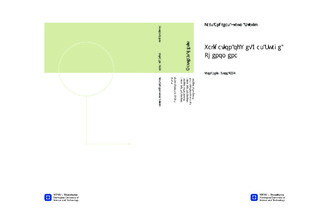| dc.description.abstract | AbstractIn order to utilize the fossil resources on the Norwegian continental shelf, technology and expertise have proven to be of great importance and hence, essential for further exploration and development of new resources. A key element in this matter is the subsea wet gas compression technology which enables the transport of well stream directly to a land based treatment system, or more remote processing facilities offshore. Compression of gas at the seabed is a significant technology advance no one has previously made. The technology of subsea gas compression is one of the most important measures to deliver increased volumes from existing gas fields as well as developing resources in more remote and vulnerable areas.Due to the need of expertise and development of subsea installations, in order to meet the demand for fossil fuels and be competitive in a constantly increasing market, the Norwegian University of Science and Technology (NTNU) has built an experimental rig to test a wet gas compressor. The rig is unique and important to analyze the basic mechanisms and occurrence of instabilities related to wet gas compression. Both the literature review and the experimental work presented here are performed in order to visualize and document instabilities related to the phenomena surge and stall. Experimental data in this master thesis are obtained from a one- stage wet gas centrifugal compressor with an axial direct inlet. The stage involves a shrouded impeller, a vaneless diffuser and a volute. The compressor is a part of an open loop facility that is located at NTNU in Trondheim. The test rig is designed to operate with different amounts of liquid in the gas with gas volume fractions (GVF) and gas mass fractions (GMF) down to correspondingly 0.95 and 0.5. Applications in LabView were made and designed to analyze the raw data from the pressure sensors and pitot tubes in order to post-process and represent the data in a graphical manner. Log files from a total of seven scientific experiments with dry- and wet gas were documented and analyzed to identify the impeller outlet angle and achieving a more precise identification of wet gas surge initiation and instability precursor. The steady state flow angle experiments revealed a stringent increase in flow angle with decreasing volume flow, for both the dry gas test of 10000 and 9000 rpm, with maximum corresponding flow angles of 81.5 and 86 degrees. A sudden rise in flow angle gradient was found to occur at a volume flow of 0.95 m3/s and 0.8 m3/s for 10000 rpm and 9000 rpm, respectively, due to the volute causing a shift change from deceleration to acceleration performance, at the respective volume flows. Flow angle measurements of dry gas were further validated and compared with Matlab and CFD simulation revealing coincident trends. The performed wet gas tests were associated with a greater uncertainty than dry gas, due to the influence of liquid. However, the wet gas curves showed distinct trends with lower discharge angles across the spectrum compared to the case for dry gas measurements.The transient surge identification test was conducted on 7500 rpm with alternating GMF in the range from 0.6 to 0.42. The pressure characteristic revealed the first sign of intermittent behavior at a volume flow of 0.26 m3/s prevailing sudden stringent static pressure fluctuations. The corresponding frequency spectrum for dynamic pressure sensors shows that the critical disturbance occurs, and is enhanced at low frequencies causing the initiation of surge at a volume flow of 0.27 m3/s. A pitot tube set-up for identification of surge onset was evaluated and compared to the measurements conducted by a static pressure-, a differential pressure- and a high responsive dynamic pressure sensor. The detection tube indicated a possible precursor to surge by prevailing change and high fluctuations in the stagnation pressure.Observation through the impeller inlet showed that an annular backflow ring was formed with decreasing volume flow. The first observation of the ring shape was done for a volume flow of 0.3 m3/s, followed by larger developments and a chaotic flow path with complete backflow for volume flow lower than 0.25 m3/s. | nb_NO |

